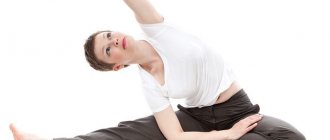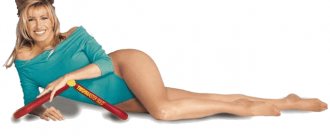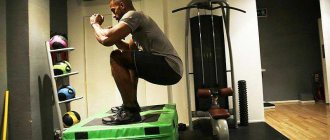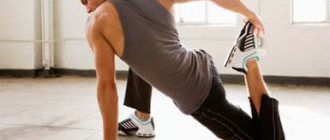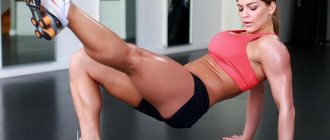Of all the components of physical fitness, stretching is the most overlooked. There is simply not enough time and energy for it. And in vain. Let's look at its benefits, recovery methods and types of stretching for all muscle groups.
Why are recovery exercises important for athletes, how to include stretching exercises in the training process and how to perform them correctly? Most athletes disdain stretching, considering it to be for beginners. The only thing they demonstrate by this is their illiteracy and short-sightedness.
Even if an athlete understands the importance of muscle stretching, many do not have enough time and patience for it, since by the end of a strength or cardio training, the only desire is to take a shower and run home.
Why do you need stretching?
There are many reasons.
For example, oversized muscles are thought to interfere with normal movement, and bodybuilders are extremely inflexible to effectively stretch after strength training. However, this is nothing more than a myth - the smoothness and ease of movements does not depend on the volume of muscles.
Physiology of the process. Your muscles actively contract during cardio or strength training. After completing the workout, the loaded areas of the body remain clamped for a long time. The subsequent gradual restoration of muscle length is called rest. Until the muscle regains its length, it has not rested. To speed up the recovery process, it is most effective to apply a set of stretching exercises to all affected body groups.
Athletes begin to lose flexibility due to lack of appropriate regular exercise. Of course, some people are initially more flexible from childhood, but this is not an excuse. Stretching has a positive effect on any person - from children to the elderly. It is best to stretch regularly, performing special complexes, both before and after training or on rest days.
In addition, stretching in bodybuilding brings many benefits, for example, it perfectly warms up and calms the muscles, and also improves muscle coordination, prevents long-term muscle pain and speeds up recovery. You will feel more energetic and improve your body's capabilities.
Stretching prevents stiffness. Over the years of training without high-quality regular stretching, the athlete’s muscles “remember” their shortened length and get used to it.
Muscle contraction and relaxation are two sides of the same process. As much as it can stretch, it can shrink further. If the muscle has not been stretched, it will contract less well, which will cause stagnation in strength results. We offer a simple set of exercises in a video program.
Also, stretching exercises prevent various injuries. According to statistics, athletes who regularly stretch are half as likely to suffer sprain-related injuries. If these professional guys take stretching responsibly, isn't it time for you to think about it too?
Basic rules for stretching
Stretching should be performed either comprehensively or on isolated muscle groups. Each of them needs stretching, especially after training. If the training took place on the legs, then you can stretch only the legs without using other muscle groups. If on your back, also on your back. However, you should be extremely careful, since the body is already under stress during training, so stretching should be very gentle.
Stretching exercises should not be performed too quickly; they do not require haste. Calf stretching exercises can be done in conjunction with other exercises.
The neck muscle exercise is performed as follows: stand up straight, tilt your head forward, while using your hand to resist your head, as if you don’t want it to tilt.
After stretching, muscle mass increases due to an increase in the length of the fibers. There are some recommendations for using exercises after training:
- posture should be perfectly straight during any exercise, except those that do not involve rounding your back;
- Do not put excessive pressure on the knee joints when lunging;
- your knees should not go beyond your toes;
- breathing should be even;
- You cannot make sudden movements.
Each stretching exercise is performed slowly, working each muscle deeply. In this case, a person must completely immerse himself in the process. In order for stretching to be as successful as possible, you need to monitor relaxation. By relaxing, the muscles stretch better.
You should not stretch your entire body at the same time. It is necessary to concentrate on certain muscle groups that were subject to stress before stretching. During the lesson, it is good to combine exercises with breathing exercises. You can borrow it from yoga, or do deep and slow breathing. Thus, when stretching, blood flow and oxygen supply will improve, metabolic processes will also be activated and training will be even more effective.
When to do stretching exercises
It is best to stretch the muscles after a short warm-up or workout, when they are well warmed up or too tired to resist stretching.
Make it a rule to do the suggested exercises after every strength or cardio workout. Weight training makes muscles hard and inflexible. When working with heavy weights, micro-tears of muscle fibers occur. Within 24-73 hours after training, the body restores them, causing them to become stronger and fuller. By performing appropriate recovery exercises on the day of your workout, you will loosen your muscles and also develop flexibility (provided you do it long enough and often enough).
You can stretch at home in the evening after training. For many active athletes, this is an ideal option, as it does not require special equipment. The more you stretch throughout the day, the more flexible your muscles will be and the easier it will be for you to maintain flexibility in the future.
Proper stretching after strength training
Proper stretching involves holding the position of gentle tension on the muscle (without pain) for 10-30 seconds. This is called light stretching. You should feel comfortable. If you feel discomfort or pain during the exercise, you need to weaken or stop the exercise.
Stretching exercises after training are done statically without sudden body swaying or jerking.
After a delay in the working position, when the muscles have become accustomed to the position of the body, you can begin progressive stretching. From a position of light stretching, you need to gradually move forward until you again feel a slight stretch in the muscle. Hold again for 10-30 seconds. The voltage will decrease slightly. Again, if you feel discomfort or pain in your muscles, you need to ease up to the point of comfort.
Remember to breathe. Breathe naturally while doing the exercises. Do not hold your breath, as this interferes with relaxation and is not beneficial. To avoid sudden movements that cause contraction of muscle fibers, breathe slowly and rhythmically. The exhalation force helps to better relax the muscle and enhances the effect. Additionally, try exercises with a massage roller. They will become indispensable for a deeper study of the fascia.
Incorrect technique
Discomfort or pain means you are stretching incorrectly, such as springing. The body responds better when completely relaxed. Pain and discomfort cause tension. It is better not to stretch through the pain, this can lead to rupture.
Video: How to do stretching for men and girls at home after training
According to Hinduism, the body and mind are one, so the path to divine enlightenment is through equally important mental and physical exercises.
Yogis paid no less attention to the development of the body than to the cultivation of the mystical properties of consciousness. One can argue with the philosophy of yogis, but the main concept of Hinduism is confirmed by modern science: a high, healthy spirit lives only in a healthy body.
Yoga poses amaze with their gymnastic complexity, but the main condition for preparedness is not physical strength, but amazing flexibility. Yogis gave this property of the body a truly divine meaning.
Oddly enough, materialistically minded scientists who undertook to study the effect of flexibility on human health were faced with a number of inexplicable phenomena.
In particular, it turned out that the development of flexibility in mature people causes a distinct effect of rejuvenation! Regular flexibility training improves the body's hormonal levels, increases intelligence and... potency!
When and why to stretch muscles in the gym
Stretching exercises have a powerful relaxation effect for girls and men, so you should not stretch before strength training. (If only a little bit.)
Time
The time to stretch is after your workout. This is where 10 minutes of thoughtful and competent stretching movements are enough to reduce recovery time by 15-25%!
However, something else is much more important for a bodybuilder. Strength exercises strengthen joints over time. If you were a powerlifter, this would be considered a positive thing. The connective tissue coarsens, becomes thicker and thereby strengthens the joints.
However, in bodybuilding the opposite is true; loss of flexibility reduces the range of exercises.
And this prevents your muscles from growing!
According to the latest scientific concept, the growth of muscle volume is dictated by simple physical stretching of the membranes of muscle fibers.
These shells have a large supply of elasticity. Under the influence of repeated repetitions pumping blood into the working muscle, each fiber thickens, stretching its outer shell. Then the blood drains, and the elastic corset of the shell contracts, returning the fiber to its previous volume.
As you know, water wears away stones. Long-term training depletes the elasticity of the connective membranes of the fibers, and they begin to gradually stretch. As a result, the fibers become thicker and thicker, like a bicycle wheel under the influence of a pump.
What happens is what is called an increase in muscle volume. If the process is not supported by regular pumping, the muscles turn into a punctured tire.
Since we are talking about microscopic scales, it takes years to stretch the shells. For example, the path to becoming a pro takes about 10 years.
Now listen! It turns out that the biological mechanism that compresses the diameter of the fibers can be interfered with! To do this, you just need to strongly stretch the working muscle!
Think for yourself, previously the elasticity mechanism resisted only the transverse expansion of the fibers, but now it will also be forced to resist longitudinal stretching. This means that the compression forces will weaken significantly!
In short, to one type of stretching you add another. It is clear that progress will go faster this way.
Leg stretching complex
Gluteal stretch
- 10-20 seconds
- Body Part: Buttocks Equipment: No
Glute stretch (knee to chest)
- 10-20 seconds
- Body Part: Buttocks Equipment: No
Hip abductor stretch while lying on the floor
- 10-20 seconds
- Body Part: Hamstring Equipment: No
Quadriceps stretch while sitting on your knees
- 10-20 seconds
- Body part: Quadriceps Equipment: Body weight
Quadriceps stretch while kneeling
- 10-20 seconds
- Body part: Quadriceps Equipment: Body weight
Quadriceps Lunge Stretch
- 10-20 seconds
- Body part: Quadriceps Equipment: Body weight
Forward Bend Hamstring Stretch
- 10-20 seconds
- Body Part: Hamstring Equipment: No
Stretch your calf muscles with your palms against the wall
- 10-20 seconds
- Body Part: Calves Equipment: No
Stretching the calf muscles and Achilles tendon
- 10-20 seconds
- Body Part: Calves Equipment: No
Add to Calendar * Add to My Workouts * Print Workout
* — The service is in beta testing
Pay attention to the results: how do your muscle fibers feel, have they begun to recover better and faster?
Gluteal stretch
Lie on your back. The left leg is extended vertically upward, the right leg is bent at the knee joint and touches the left knee in front. Grab your left thigh with both hands and pull it slightly towards you. Hold this position. Repeat for the other leg.
Why is it important to do this exercise: the gluteal muscles support us during running, stepper exercises and other exercises that actively involve the legs. It is especially worth paying attention to stretching the buttocks for people engaged in sedentary work.
Photo: womensfitness.co.uk; pexels.com/Li Sun
